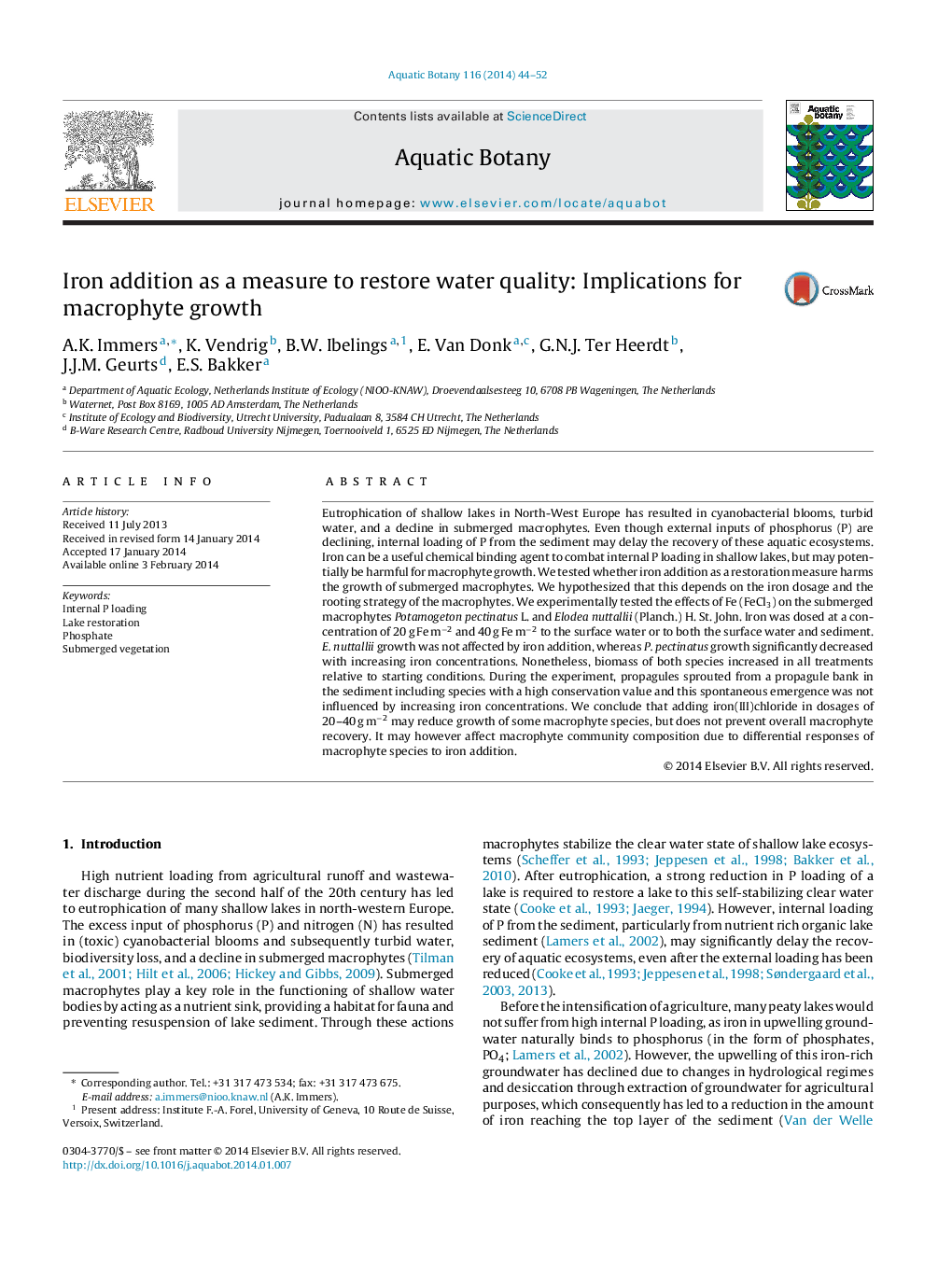| کد مقاله | کد نشریه | سال انتشار | مقاله انگلیسی | نسخه تمام متن |
|---|---|---|---|---|
| 4527777 | 1625826 | 2014 | 9 صفحه PDF | دانلود رایگان |
• Effects of iron addition (20 and 40 g Fe m−2) on two different macrophyte species.
• Elodea nuttallii growth was not affected and Potamogeton pectinatus growth decreased.
• Biomass of both species increased in all treatments relative to starting conditions.
• Difference in reaction of macrophytes to iron may affect macrophyte community composition.
• Species of high conservation value still sprouted from sediment with iron addition.
Eutrophication of shallow lakes in North-West Europe has resulted in cyanobacterial blooms, turbid water, and a decline in submerged macrophytes. Even though external inputs of phosphorus (P) are declining, internal loading of P from the sediment may delay the recovery of these aquatic ecosystems. Iron can be a useful chemical binding agent to combat internal P loading in shallow lakes, but may potentially be harmful for macrophyte growth. We tested whether iron addition as a restoration measure harms the growth of submerged macrophytes. We hypothesized that this depends on the iron dosage and the rooting strategy of the macrophytes. We experimentally tested the effects of Fe (FeCl3) on the submerged macrophytes Potamogeton pectinatus L. and Elodea nuttallii (Planch.) H. St. John. Iron was dosed at a concentration of 20 g Fe m−2 and 40 g Fe m−2 to the surface water or to both the surface water and sediment. E. nuttallii growth was not affected by iron addition, whereas P. pectinatus growth significantly decreased with increasing iron concentrations. Nonetheless, biomass of both species increased in all treatments relative to starting conditions. During the experiment, propagules sprouted from a propagule bank in the sediment including species with a high conservation value and this spontaneous emergence was not influenced by increasing iron concentrations. We conclude that adding iron(III)chloride in dosages of 20–40 g m−2 may reduce growth of some macrophyte species, but does not prevent overall macrophyte recovery. It may however affect macrophyte community composition due to differential responses of macrophyte species to iron addition.
Journal: Aquatic Botany - Volume 116, May 2014, Pages 44–52
